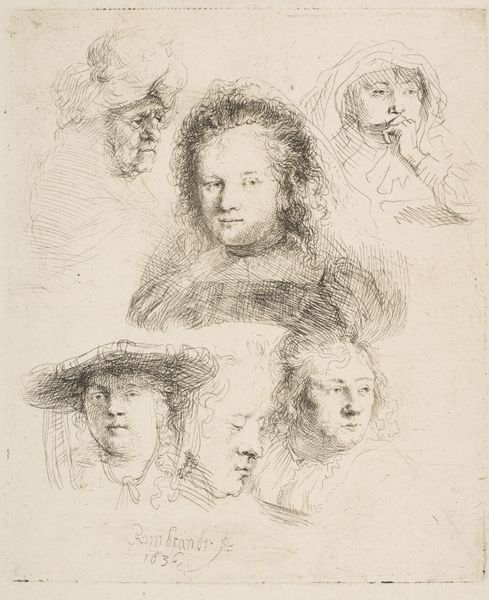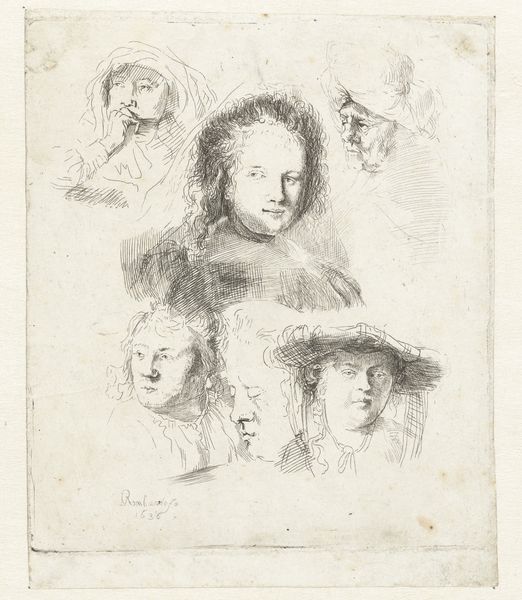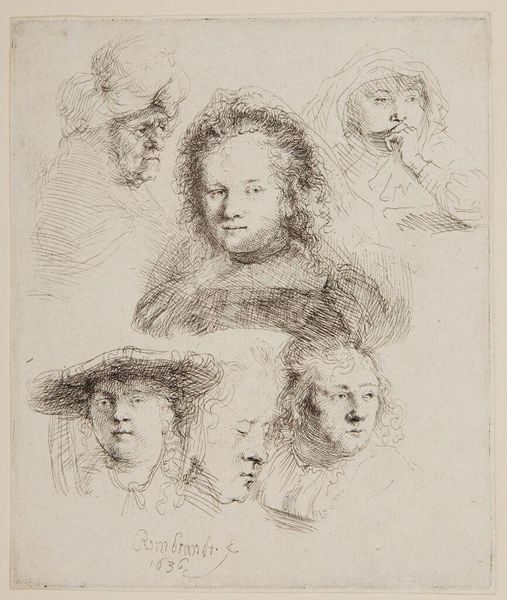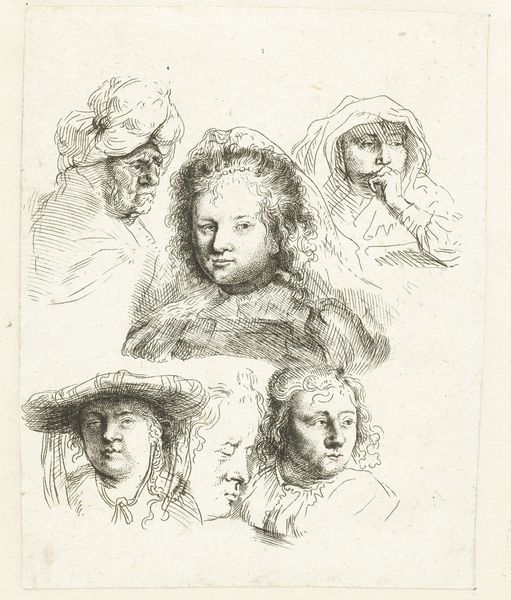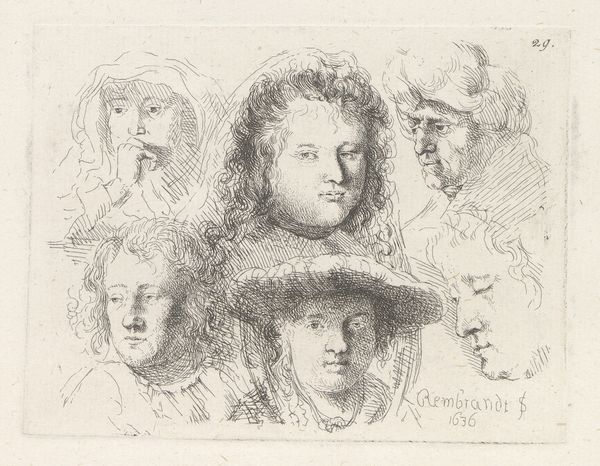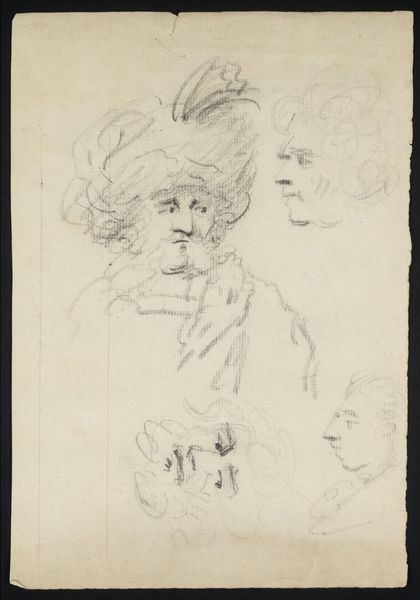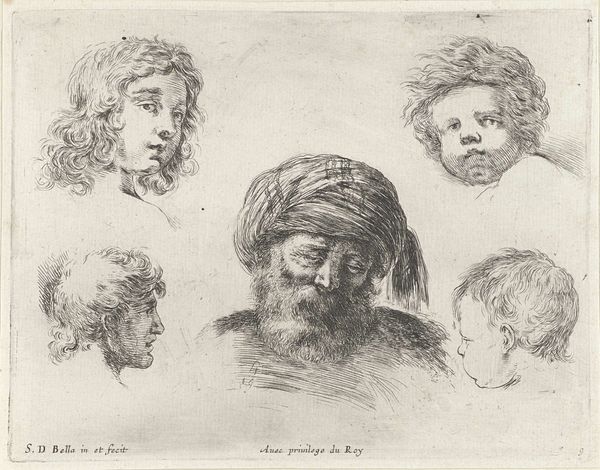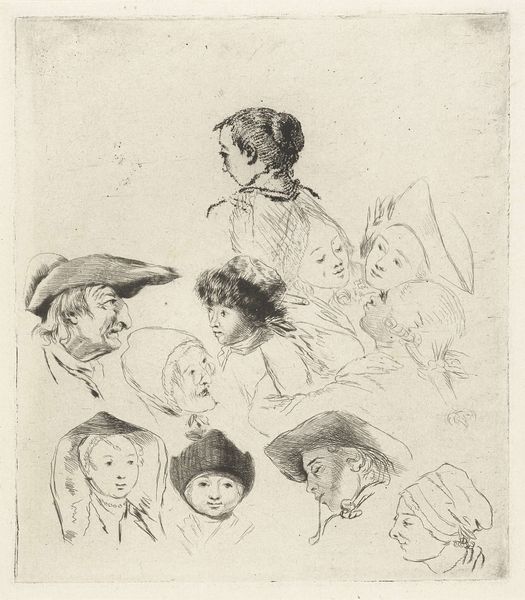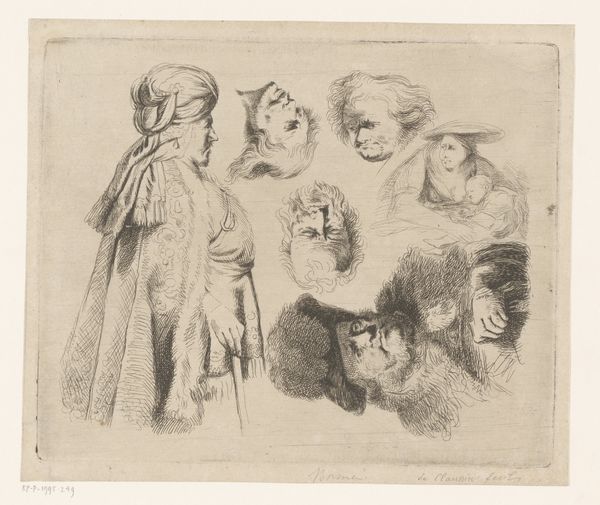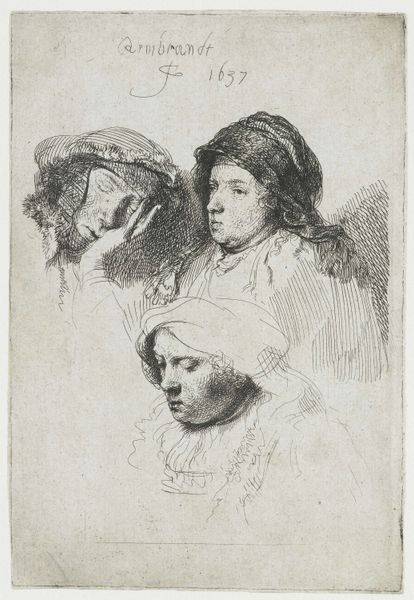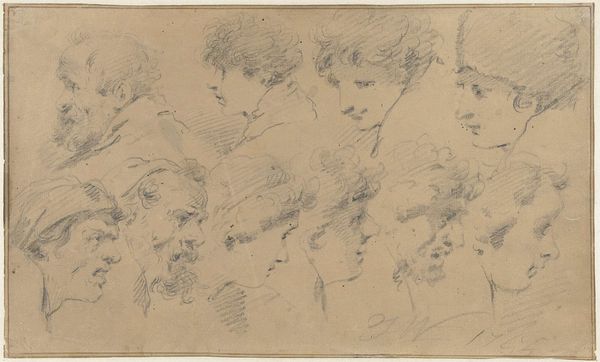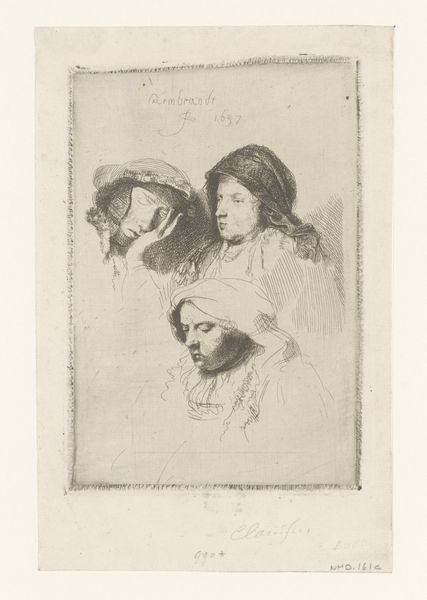
drawing, pen
#
drawing
#
pen sketch
#
pencil sketch
#
figuration
#
line
#
pen
#
academic-art
Dimensions: height 150 mm, width 123 mm
Copyright: Rijks Museum: Open Domain
Editor: This is "Studies of the head of Saskia and others," attributed to Ignace-Joseph de Claussin between 1805 and 1844. It's a pen and pencil drawing, currently held in the Rijksmuseum. It feels like a page torn from a sketchbook, full of fleeting impressions. What do you see in this piece, focusing on its formal elements? Curator: Initially, it's vital to acknowledge the artist’s strategic use of line. Observe how Claussin employs varying densities of line to create a sense of depth, most notably in the contrast between the focused details of the faces and the sketchier backgrounds. Also, consider the positioning of the figures on the page; note how each placement generates interesting tensions, creating dynamic relationships and offering entry points for viewing. Editor: It is interesting to think about the figures and their positioning and how each can generate dynamic relationships. How much consideration should we give to Claussin's approach when making the sketch in either pencil or pen? Curator: The transition between pen and pencil reveals Claussin's sensitivity to each medium’s potential. The sharper, more decisive pen strokes are generally used to define critical contours and facial expressions, adding stability to the drawing, while the pencil offers flexibility for tonal variation and quick alterations, leading to the overall expressive potential of the image. Editor: So, would you say it is that relationship between line and shading what gives the sketch its unique character? Curator: Precisely. And it's through understanding this visual dynamic that we can appreciate the sophistication embedded in this study. Notice, for example, that the drawing may present more than just representations; its internal compositional rhythm emphasizes form and figure relationships to provide an art viewing experience. Editor: It's amazing to realize how much information a simple sketch can communicate by merely considering composition and artistic technique. Thank you! Curator: A fruitful observation. By centering the formal composition we allow its intrinsic aesthetic character to lead our analysis.
Comments
No comments
Be the first to comment and join the conversation on the ultimate creative platform.
